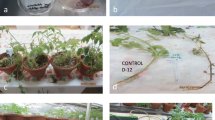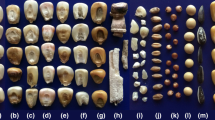Abstract
In this study, the major maize ear rot pathogens were differentiated from one another, on growth media, with near-infrared (NIR) hyperspectral imaging. Fungal isolates of four pathogens commonly associated with maize grain (Fusarium verticillioides, F. graminearum s.s., F. boothii and Stenocarpella maydis) were plated on potato dextrose agar, in triplicate, and incubated at 25°C for 5 days. Images were collected with a SisuChema short-wave infrared (SWIR) pushbroom hyperspectral imaging system ranging from 1000 to 2500 nm. Pixel and object wise classification algorithms were compared to determine the best approach. These were evaluated with principal component analysis and partial least squares discriminant analysis. The pathogens were distinguished using three-way classification models that were validated with independent images. The object wise approach proved to be more effective in distinguishing ear rot pathogens with a higher average overall classification accuracy (93.75%). The object wise models achieved two 100% classification accuracies from the four pathogen models, while none of the pixel wise classification models were error free. The specificity and sensitivity further highlighted the superiority of the object wise approach. The high accuracy of object wise classification (> 86%) can be attributed to the representation of the mean spectra per object. NIR hyperspectral imaging can thus accurately distinguish between the major maize ear rot pathogens, with object wise classification proving to be the optimal approach.

















Similar content being viewed by others
References
Barna-Vetro I, Szabo E, Fazekas B, Solti L (2000) Development of a sensitive ELISA for the determination of Fumonisin B1 in cereals. J Agric Food Chem 48:2821–2825
Berardo N, Pisacane V, Battilani P, Scandolara A, Pietri A, Marocco A (2005) Rapid detection of kernel rots and mycotoxins in maize by near-infrared reflectance spectroscopy. J Agric Food Chem 53:8128–8134
Beukes I, Rose LJ, Shephard GS, Flett BC, Viljoen A (2017) Mycotoxigenic Fusarium species associated with grain crops in South Africa—a review. S Afr J Sci 113:1–12
Boutigny A, Ward TJ, Van Coller GJ, Flett B, Lamprecht SC, O’Donnell K, Viljoen A (2011) Analysis of the Fusarium graminearum species complex from wheat, barley and maize in South Africa provides evidence of species-specific differences in host preference. Fungal Genet Biol 48:914–920
Boutigny AL, Beukes I, Small I, Zühlke S, Spiteller M, Van Rensburg BJ, Flett B, Viljoen A (2012) Quantitative detection of Fusarium pathogens and their mycotoxins in south African maize. Plant Pathol 61:522–531
Burger JE (2006) Hyperspectral NIR Image Analysis. PhD Thesis. Swedish University of Agricultural Sciences, Umeå
Delwiche SR, Hareland GA (2004) Detection of scab-damaged hard red spring wheat kernels by near-infrared reflectance. Cereal Chem 81:643–649
Del Fiore A, Reverberi M, Ricelli A, Pinzari F, Serranti S, Fabbri AA, Bonifazi G, Fanelli C (2010) Early detection of toxigenic fungi on maize by hyperspectral imaging analysis. Int J Food Microbiol 144:64–71
EPPO. (2017) Stenocarpella macrospora and Stenocarpella maydis [Internet document] URL https://www.eppo.int/QUARANTINE/data_sheets/.../DIPDSP_ds.pdf. Accessed 24/07/2017
Esbensen KH, Guyot D, Westad F & Houmøller LP (2002) Principal component analysis (PCA)—introduction. In: Multivariate data analysis in practice: an introduction to multivariate data analysis and experimental design. 5th edn. CAMO process AS
Foca G, Ferrari C, Ulrici A, Sciutto G, Prati S, Morandi S, Brasca M, Lavermicocca P, Lanteri S, Oliveri P (2016) The potential of spectral and hyperspectral-imaging techniques for bacterial detection in food: a case study on lactic acid bacteria. Talanta 153:111–119
Gelderblom WCA, Seier JV, Snijman PW, Van Schalkwyk DJ, Shephard GS, Marasas WFO (2001) Toxicity of culture material of Fusarium verticillioides strain MRC 826 to nonhuman primates. Environ Health Perspect 109:267–276
Gokul A (2015) Fusarium graminearum species complex (FGSC) composition in South African wheat and maize grown in rotation. Stellenbosch University, Stellenbosch, MSc Thesis
Gowen AA, O’Donnell CP, Cullen PJ, Downey G, Frias JM (2007) Hyperspectral imaging—an emerging process analytical tool for food quality and safety control. Trends Food Sci Technol 18:590–598
Kammies T, Manley M, Gouws PA, Williams PJ (2016) Differentiation of foodborne bacteria using NIR hyperspectral imaging and multivariate data analysis. Appl Microbiol Biotechnol 100:9305–9320
Kucheryavskiy S (2013) A new approach for discrimination of objects on hyperspectral images. Chemom Intell Lab Syst 120:126–135
Manley M (2014) Near-infrared spectroscopy and hyperspectral imaging: non-destructive analysis of biological materials. Chem Soc Rev 43:8200–8214
Marasas WFO, Thiel PG, Rabie CJ, Nelson PE, Toussoun TA (1986) Moniliformin production in Fusarium section Liseola. Mycologia 78:242–247
Munkvold GP (2003) Cultural and genetic approaches to managing mycotoxins in maize. Annu Rev Phytopathol 41:99–116
Nirenberg HI, O’Donnell K (1998) New Fusarium species and combinations within the Gibberella fujikuroi species complex. Mycologia 90:434–458
Osborne BG, Fearn T, Hindle PH (1993) Practical NIR spectroscopy with applications in food and beverage analysis, 2nd edn. Longman Scientific & Technical, Essex
Peraica M, Radić B, Lucić A, Pavlović M (1999) Toxic effects of mycotoxins in humans. Bull World Health Organ 77:754–766
Prats-Montalbán JM, de Juan A, Ferrer A (2011) Multivariate image analysis: a review with applications. Chemom Intell Lab Syst 107:1–23
Rabie CJ, Van Rensburg SJ, Kriek NPJ, Lübben A (1977) Toxicity of Diplodia maydis to laboratory animals. Appl Environ Microbiol 34:111–114
Rinnan A, Van Den Berg F & Engelsen SB (2009) Review of the most common pre-processing techniques for near-infrared spectra. Trends in Analytical Chemistry, 28
Rossouw JD, Van Rensburg JBJ, Van Deventer CS (2002) Breeding for resistance to ear rot of maize, caused by Stenocarpella maydis (Berk) Sutton. 1. Evaluation of selection criteria. South Afr J Plant Soil 19:182–187
Schilling AG, Möller EM, Geiger HH (1996) Polymerase chain reaction-based assays for species-specific detection of Fusarium culmorum, F. graminearum, and F. avenaceum. Phytopathology 86:515–522
Seo Y, Park B, Hinton A, Yoon JS, Lawrence KC (2016) Identification of Staphylococcus species with hyperspectral microscope imaging and classification algorithms. J Food Meas Charact 10:253–263
Shephard GS (2008) Impact of mycotoxins on human health in developing countries. Food Addit Contam 25:146–151
Snyder WC, Hansen HN (1940) The species concept in Fusarium. Am J Bot 27:64–67
Sokolova M, Japkowicz N, Szpakowicz S (2006) Beyond accuracy, F-score and ROC: a family of discriminant measures for performance evaluation. In: Advances in Artificial Intelligence: 19th Australian Joint Conference on Artificial Intelligence (edited by a. Sattar & B. Kang). Springer, Berlin Heidelberg, pp 1015–1021
Strausbaugh CA, Overturf K, Koehn AC (2005) Pathogenicity and real-time PCR detection of Fusarium spp. in wheat and barley roots. Can J Plant Pathol 27:430–438
Turner NW, Bramhmbhatt H, Szabo-Vezse M, Poma A, Coker R, Piletsky SA (2015) Analytical methods for determination of mycotoxins: an update (2009-2014). Anal Chim Acta 901:12–33
Velusamy V, Arshak K, Korostynska O, Oliwa K, Adley C (2010) An overview of foodborne pathogen detection: in the perspective of biosensors. Biotechnol Adv 28:232–254
Williams PJ (2013) Near infrared (NIR) hyperspectral imaging and X-ray computed tomography combined with statistical and multivariate data analysis to study Fusarium infection in maize. PhD Thesis. Stellenbosch University, Stellenbosch
Williams PJ, Geladi P, Britz TJ, Manley M (2012a) Near-infrared (NIR) hyperspectral imaging and multivariate image analysis to study growth characteristics and differences between species and strains of members of the genus Fusarium. Anal Bioanal Chem 404:1759–1769
Williams PJ, Geladi P, Britz TJ, Manley M (2012b) Investigation of fungal development in maize kernels using NIR hyperspectral imaging and multivariate data analysis. J Cereal Sci 55:272–278
Williams PJ, Kucheryavskiy S (2016) Classification of maize kernels using NIR hyperspectral imaging. Food Chem 209:131–138
Yao H, Hruska Z, Kincaid R, Brown RL, Cleveland TE (2008) Differentiation of toxigenic fungi using hyperspectral imagery. Sens & Instrumen Food Qual 2:215–224
Acknowledgements
The authors wish to thank Prof Alvaro Viljoen and Dr. Ilze Vermaak, Tshwane University of Technology, Pretoria for use of the NIR hyperspectral imaging system.
Funding
This work is based on the research supported in part by the National Research Foundation of South Africa (grant numbers 94031 and 95343).
Author information
Authors and Affiliations
Corresponding author
Ethics declarations
Conflict of Interest
Paul J. Williams declares that he has no conflict of interest. Cenette Bezuidenhout declares that she has no conflict of interest. Lindy J. Rose declares that she has no conflict of interest.
Ethical Approval
This article does not contain any studies with human participants or animals performed by any of the authors.
Informed Consent
Not applicable
Additional information
Publisher’s Note
Springer Nature remains neutral with regard to jurisdictional claims in published maps and institutional affiliations.
Rights and permissions
About this article
Cite this article
Williams, P.J., Bezuidenhout, C. & Rose, L.J. Differentiation of Maize Ear Rot Pathogens, on Growth Media, with Near Infrared Hyperspectral Imaging. Food Anal. Methods 12, 1556–1570 (2019). https://doi.org/10.1007/s12161-019-01490-y
Received:
Accepted:
Published:
Issue Date:
DOI: https://doi.org/10.1007/s12161-019-01490-y




